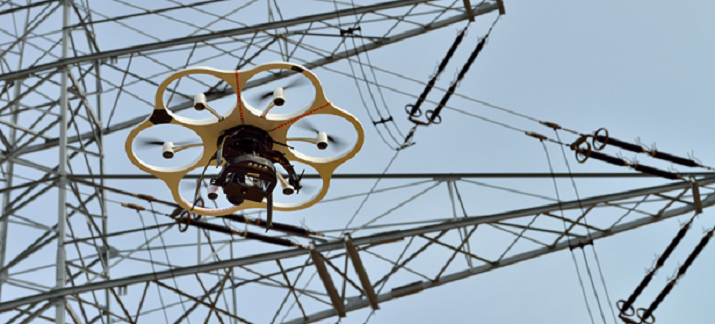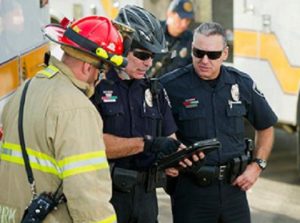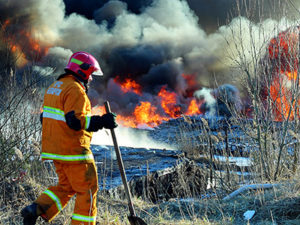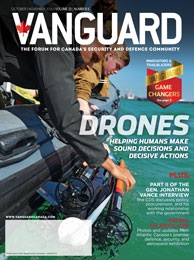The Canadian Armed Forces face a number of harrowing mandates – both domestic and international – to ensure the safety of our country. Domestic emergencies like natural disasters often come to light when provincial governments seek federal resources, through manpower, machinery, and tools.
However, Canada’s military still relies heavily on dated paper copy emergency operating procedures, captured in physical binders that are often forgotten until an emergency arises, and often lack the updated information and lessons learned from recent emergency situations.
Regional military bases and wings are quick to jump in to provide assistance, as troops stationed in Gagetown did when spring thaws produced dangerously high flood levels. Search and rescue, in the case of a flood, is just one example of the kind of domestic emergencies that keep our forces busy. As insurance costs rise, planning and immediate responsiveness can save millions of dollars lost in damages caused by natural disasters.
This type of mandate is not rare; in May of this year, the army deployed troops and aircraft to Alberta to battle the wildfires in Fort McMurray. CH-146 Griffon helicopters were sent to perform evacuations, while C-130J Hercules planes and a C-17 Globemaster stood at the ready to aid in the movement of firefighters and equipment as needed.
As natural disasters like floods and fires are primarily a regional issue, provincial governments need to coordinate emergency response protocols with the federal government— an integration process that can be challenging. It can be difficult to communicate and execute emergency plans that involve different groups with different mandates, but with a single platform that houses and provides access to all documents, resources, and communications from one platform, emergency responders can streamline efficiencies and improve response time to significantly minimize lost dollars due to damages caused by natural disasters – and in some cases, reduce the loss of life.
While emergency response solutions continue to progress and evolve with technology, there is a definite need for single platforms like Intergraph Planning and Response to streamline emergency response planning, execution, and documentation.
Military technology today
Unmanned aerial vehicles (UAVs) are frequently used to survey and monitor operational areas and capture visual data. They are becoming an increasingly important part of the C4ISR capabilities being acquired and used by the Canadian Forces.
While there are technologies that provide options for integrating the video or still shots collected from UAVs, Intergraph Planning and Response is a solution currently trusted and well-regarded by the German Federal Police Force to manage both planned and unplanned events. The solution provides the force a common operating picture and fully-integrated solution for special operations rooms, command staffs, and command posts in the field, enabling the ability to effectively and efficiently plan and allocate resources for a variety of situations.
UAVs and Intergraph Planning and Response can be used together as a resource in emergency management for activities across Canada. The technology can also provide a start-to-finish solution for domestic operations in Canada, such as the surveillance and image capturing of hazard zone perimeters, flood levels, burn rates, and search and rescue requirements, among others.
Stages of Emergency Response
With the variety of situations that can require military attention, preparation and planning are especially important. Typically, there are six stages in a good emergency response protocol, that when followed closely can minimize impact and maximize efficiency. A solution like Intergraph Planning and Response ensures cohesive communication and integration throughout these important steps of response.
Planning information availability: Creating and streamlining accessibility to a detailed emergency response framework ahead of time is critical to responding to emergency situations when they arise.
Response activation: With a single activation point, the time between activation and response can be reduced by collectively notifying and assigning tasks to responders defined in a response plan.
Scene development and damage assessment: A single accessible and interactive visual representation of the emergency zone, that can be updated in real-time from a variety of sources including visuals and data captured by drones and other UAVs, autonomous underwater vehicles (AUVs) and body cameras, enables emergency commanders to identify and execute an appropriate response plan, strategically place responders, coordinate evacuation orders, direct involved parties and identify resources immediately available – while averting further issues and risk.
Resource management: Integrating and modifying varying reporting structures, equipment inventories, and training documents into a single platform give responders quick access to the resources needed to make fast decisions – allowing them to react and potentially resolve a disaster before it escalates. Intergraph Planning and Response allows commanders to revise the plan and implement changes in real-time as available resources change.
Communication and task tracking: Communication is invaluable when it comes to keeping troops and responders safe in an emergency. Consistent sharing of tasks, information, images and documents through a single platform accessible to all involved parties can be the difference between mitigation and escalation.
Documentation and reporting: Often overlooked, the documenting stage is critical for the auditing process. A digital platform ensures all information is captured in a single location, enabling for a better understanding of the issue and response, as well as post-event reporting.
(Click on the image below to open up the latest digital edition of the Vanguard Magazine)
While Intergraph Planning and Response provides the ability to plan for and manage the situation, the platform’s strength lies in real-time updates and communications to and from various stakeholders involved in controlling the situation. For example, UAVs, body cameras, and sensors are some of the recent technologies that capture and provide the data that is populated into the interface, providing all appropriate stakeholders of a response team with diverse, accurate information in real-time to ensure safety and efficiency.
Proactive solutions
These technologies are able to efficiently collect information that would be unobtainable by ground troops. In the instance of the New Brunswick flooding, drones would allow personnel to actively monitor the rapidly changing water levels to keep troops informed while providing the information needed to make necessary search and rescue or evacuation orders.
An interface like Intergraph Planning and Response allows military commanders to respond to emergencies quickly and effectively both proactively and reactively. By planning and programming emergency response plans ahead of time, military forces are enabled to practice, adapt and update procedures as needed. In addition, having these plans properly documented and updated in real-time as emergency situations arise provides a lessons learned capability that helps improve the response process and time.
Given the wide range of mandates, the Canadian Armed Forces could be called on for at any given time, the importance of having the systems in place to ensure the exemplary emergency response is high. With the rate of technological advances providing constant opportunities for growth and betterment in the military, investing in smart technology to improve efficiencies and effectiveness is crucial.
Ken Chadder is a business development consultant with Hexagon Safety & Infrastructure in Ottawa. A highly decorated, retired colonel, he became the first Commanding Officer of the newly named Canadian Forces Warfare Centre in June 2010. Kevin Young is a solution consultant with Hexagon. Hexagon Safety & Infrastructure provides mission-critical and business-critical solutions to governments and service providers.




